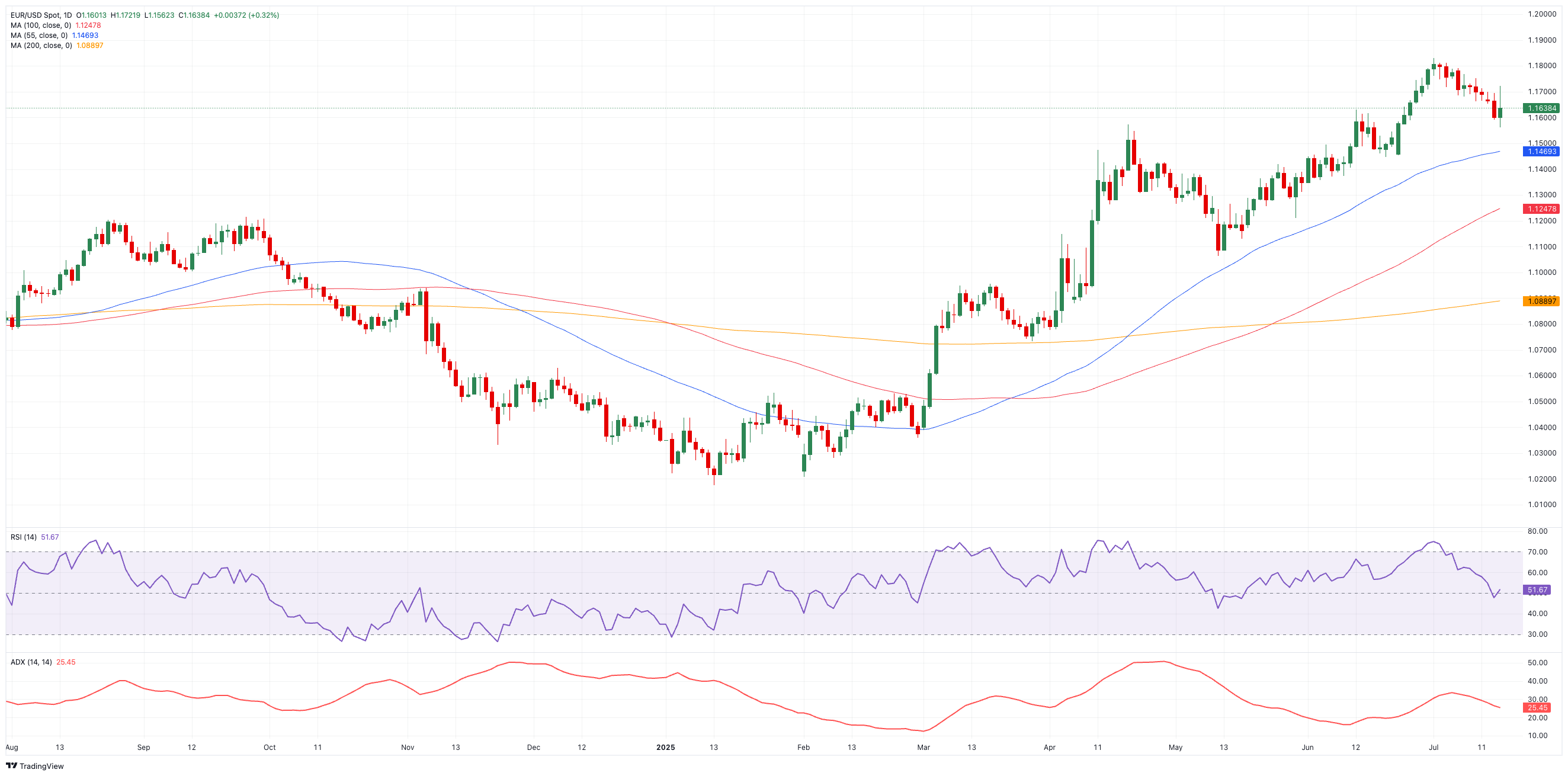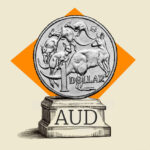
- EUR/USD rebounded from multi-week lows in the sub-1.1600 zone.
- The US Dollar surrendered initial gains following Trump-Powell rumours.
- US Producer Prices came in below market expectations in June.
Midweek saw the Euro (EUR) regaining its strength against the US Dollar, as the EUR/USD made a significant recovery after plunging to three-week lows near the 1.1560 zone earlier in the day.
Trade tensions roil Markets
Although the White House has postponed any new tariff decisions until August 1, worries over a widening trade war are already weighing on the European currency.
US threats of 30% levies on EU goods, combined with recent announcements of 25% tariffs on Japanese and South Korean imports and a hefty 50% surcharge on copper, have stoked fears of an all‑out confrontation and lent fresh support to the dollar in the last few days.
In the latest news, the EU’s trade leader, Maros Sefcovic, went to Washington to discuss tariffs, as he is likely to meet with US Commerce Secretary Howard Lutnick and Trade Representative Jamieson Greer.
Central banks part ways
Minutes from June’s Federal Reserve meeting revealed a committee divided: some officials pushing for immediate rate cuts, others urging caution until the inflationary impact of tariffs becomes clear. Markets still expect some easing later this year, provided price pressures prove transitory. Meanwhile, US CPI data showed inflation picked up in June, reinforcing Fed Chair Jerome Powell’s cautious stance.
By contrast, the European Central Bank (ECB) has held firm, signalling that further policy loosening will only happen if there’s clear evidence of faltering external demand. It is worth recalling that the ECB’s Deposit Facility Rate sits at 2.00% after an early‑June cut.
Positioning: Bulls and bears battle it out
Speculators have piled into euro longs: CFTC data to July 8 show net long positions surged to the highest since December 2023 past 120.5K contracts, while institutional net shorts rose to around 177K contracts, also a multi‑month peak. Additionally, open interest climbed for a third consecutive week, this time to roughly 806K contracts.
Chart pulse
On the upside, EUR/USD must clear its 2025 tops of 1.1830 (July 1) before targeting the June 2018 peak at 1.1852.
To the downside, a break below July’s base at 1.1562 (July 16) could pave the way to the 55‑day SMA at 1.1467, then the May 29 trough at 1.1210 and the base at 1.1064 (May 12), all en route to the psychologically key 1.1000 level.
Technical gauges regained the bullish tilt: the Relative Strength Index (RSI) has rebounded above 51, and the Average Directional Index (ADX) sits near 26, signalling a trend driven by conviction.
EUR/USD daily chart

Looking ahead
With US tariff policy still in flux and the Fed–ECB policy gap widening, the Euro may struggle to mount a sustained rally. Yet any clear sign of Fed moderation, or fresh indications of slowing trade tensions, could quickly shift the balance back in the single currency’s favour.
US-China Trade War FAQs
Generally speaking, a trade war is an economic conflict between two or more countries due to extreme protectionism on one end. It implies the creation of trade barriers, such as tariffs, which result in counter-barriers, escalating import costs, and hence the cost of living.
An economic conflict between the United States (US) and China began early in 2018, when President Donald Trump set trade barriers on China, claiming unfair commercial practices and intellectual property theft from the Asian giant. China took retaliatory action, imposing tariffs on multiple US goods, such as automobiles and soybeans. Tensions escalated until the two countries signed the US-China Phase One trade deal in January 2020. The agreement required structural reforms and other changes to China’s economic and trade regime and pretended to restore stability and trust between the two nations. However, the Coronavirus pandemic took the focus out of the conflict. Yet, it is worth mentioning that President Joe Biden, who took office after Trump, kept tariffs in place and even added some additional levies.
The return of Donald Trump to the White House as the 47th US President has sparked a fresh wave of tensions between the two countries. During the 2024 election campaign, Trump pledged to impose 60% tariffs on China once he returned to office, which he did on January 20, 2025. With Trump back, the US-China trade war is meant to resume where it was left, with tit-for-tat policies affecting the global economic landscape amid disruptions in global supply chains, resulting in a reduction in spending, particularly investment, and directly feeding into the Consumer Price Index inflation.
Information on these pages contains forward-looking statements that involve risks and uncertainties. Markets and instruments profiled on this page are for informational purposes only and should not in any way come across as a recommendation to buy or sell in these assets. You should do your own thorough research before making any investment decisions. FXStreet does not in any way guarantee that this information is free from mistakes, errors, or material misstatements. It also does not guarantee that this information is of a timely nature. Investing in Open Markets involves a great deal of risk, including the loss of all or a portion of your investment, as well as emotional distress. All risks, losses and costs associated with investing, including total loss of principal, are your responsibility. The views and opinions expressed in this article are those of the authors and do not necessarily reflect the official policy or position of FXStreet nor its advertisers. The author will not be held responsible for information that is found at the end of links posted on this page.
If not otherwise explicitly mentioned in the body of the article, at the time of writing, the author has no position in any stock mentioned in this article and no business relationship with any company mentioned. The author has not received compensation for writing this article, other than from FXStreet.
FXStreet and the author do not provide personalized recommendations. The author makes no representations as to the accuracy, completeness, or suitability of this information. FXStreet and the author will not be liable for any errors, omissions or any losses, injuries or damages arising from this information and its display or use. Errors and omissions excepted.
The author and FXStreet are not registered investment advisors and nothing in this article is intended to be investment advice.







